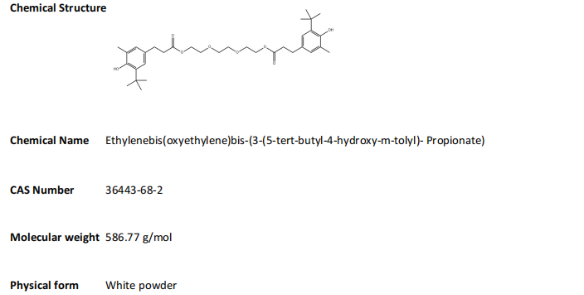Address:Room 906, building 6, SIIC Center, No.195 Hong Kong East Road, Laoshan District, Qingdao city, Shandong Province, China
E-mail:info@deltachem.net
The oxidation process of polymers is a free radical chain reaction. Plastic antioxidants can capture active free radicals, generate inactive free radicals, or decompose the polymer hydroperoxides produced during the oxidation process, terminate the chain reaction, delay the oxidation process of the polymer, thus enabling the polymer to be processed smoothly and extending its service life.

Among the antioxidants that provide long-term thermal oxygen stability protection for polymers, hindered phenolic antioxidants are the most important type. They can be used alone or in combination with auxiliary antioxidants. When hindered phenolic antioxidants are used in combination with auxiliary antioxidants, they have better long-term and high-temperature thermal oxygen stability effects than when phenolic antioxidants are used alone.

The asymmetric hindered phenolic antioxidant AN245, with its reduced steric hindrance effect, makes it easier to achieve nitro substitution at the phenolic hydroxyl interposition. As a result, the stable m-nitrosylated helical compound formed is a white solid, which overcomes the drawback of symmetrical hindered phenolic interposition nitrification and oxidation to form colored products.
The main application advantages of OMNISTAB AN245 are as follows:
>Odorless, low volatility, with good color stability and extraction resistance;
>It is mainly applied in styrene, synthetic rubber, polyoxymethylene (POM) homopolymers and copolymers, polyurethane (PU), polyamide (PA), polyester (PET) and PVC materials;
>In the field of polyurethane materials, it can be used in products such as RIM, TPU, spandex, polyurethane adhesives, and sealants.

Basic information of OMNISTAB AN245
In addition, OMNISTAB AN245 is a high-performance hindered phenolic antioxidant that can be used as the main antioxidant for organic polymers. When used in combination with thioester antioxidants, it has a good synergistic effect.
The symmetrical hindered phenolic antioxidant AN1010 and the asymmetric hindered phenolic antioxidant AN245 were used in combination with thioester antioxidants for comparison. The results showed that when AN245 and AN1010 were used alone as the main antioxidants, the thermal oxygen stability effects of the two antioxidants were basically the same. When the same mass of the primary antioxidant is added in combination with the thioester auxiliary antioxidant, the thermal oxygen stability effect of the asymmetric hindered phenolic antioxidant AN245 is significantly better than that of the symmetric hindered phenolic antioxidant AN1010.
The data results further verify that there is an intermolecular hydrogen bond association between the phenolic hydroxyl group of the asymmetric hindered phenolic antioxidant and the ester bond of the thioester, and the combination is relatively tight in the polymer system, which is conducive to the effective decomposition of hydrogen peroxides. For symmetrical hindered phenolic antioxidants, due to the presence of tert-butyl groups at the two adjacent positions, a significant steric hindrance effect is generated, which hinders the formation of molecular hydrogen bonds between the phenolic hydroxyl group and the thioester bond. The hydrogen peroxides produced after the hydrogen transfer of the main antioxidant can only react randomly with the thioester in an indirect way, and the efficiency of decomposing hydrogen peroxides is not high.
Therefore, the synergistic effect of asymmetric hindered phenolic antioxidants and thioesters is significantly higher than that of the combination of symmetric hindered phenolic antioxidants and thioesters.
Deltachem(Qingdao) co.,ltd. is dedicated to the research and development, production and sales of polymer additives. We welcome you to call for consultation and discuss more topics about polymer additives together. For more information, please contact our business personnel.